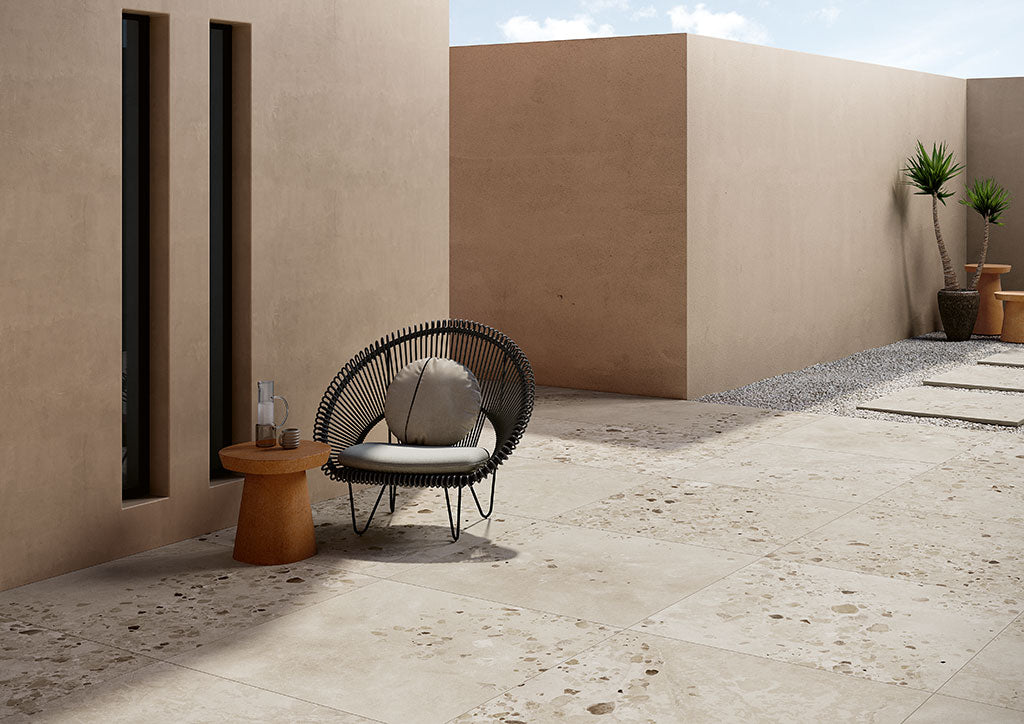Terrazzo tiles, with their intricate patterns and elegant appearance, have long been a staple in architectural and interior design. Their stunning visuals, combined with durability and versatility, make them a preferred choice for both residential and commercial spaces. Let’s delve into what makes terrazzo tiles so captivating and why they continue to be a timeless favorite.
A Rich Historical Legacy
Originating in 15th-century Venice, terrazzo was created by Venetian workers using marble remnants. The fragments were set in clay and polished to a smooth finish, resulting in a beautiful mosaic-like surface. This resourceful method not only minimized waste but also produced a visually striking flooring material. Over centuries, the craft evolved, incorporating various materials and techniques, culminating in the modern terrazzo we know today.
The allure of terrazzo tiles lies in their unique and intricate patterns. Composed of a blend of marble, quartz, granite, glass, or other materials, terrazzo offers a vast array of design possibilities. Each tile is a work of art, with colorful fragments creating a speckled, mosaic effect that is both captivating and sophisticated.
Color and Composition Terrazzo tiles come in an extensive range of colors and compositions. From classic black-and-white combinations to bold, vibrant hues, the color palette is virtually limitless. This diversity allows designers to tailor terrazzo to fit any aesthetic, whether it’s a minimalist modern space or a lavish, ornate interior.
Customization and Versatility One of terrazzo’s most appealing features is its ability to be customized. Designers can mix various aggregates to create bespoke patterns and color schemes. This flexibility makes terrazzo suitable for a wide range of applications, from flooring and wall coverings to countertops and furniture.
Reflective Quality The polished surface of terrazzo tiles enhances their visual appeal by reflecting light, adding a luminous quality to any space. This reflective property can make rooms appear brighter and more spacious, contributing to an overall sense of elegance and grandeur.
Today, terrazzo has been reimagined and modernized to fit contemporary design trends. Innovative techniques and materials have expanded its application beyond traditional uses. For instance, full-body porcelain stoneware mimics the look of classic terrazzo while offering superior durability and ease of maintenance. This modern iteration maintains the timeless charm of terrazzo while meeting the demands of today’s busy lifestyles.
Leading tile manufacturers like Marca Corona have redefined terrazzo with collections that pay homage to its historical roots while infusing new personality through color and design. Collections like Venice Villa and Rialto epitomize this approach, offering a rich palette of hues, sizes, and finishes that enable designers to create personalized statement floors and walls. These tiles evoke the opulence of Venetian palaces while catering to contemporary tastes.
In addition to their aesthetic appeal, terrazzo tiles are celebrated for their sustainability. Many terrazzo products incorporate recycled materials, aligning with eco-friendly design principles. The production process itself is energy-efficient, further reducing the environmental impact.
Moreover, advancements in technology have led to the development of terrazzo tiles with enhanced durability and resistance to wear and tear. This makes them ideal for high-traffic areas, ensuring that their beauty remains intact for years to come.
The stunning visual appeal of terrazzo tiles, with their rich history, customizable designs, and modern reinterpretations, makes them a perennial favorite in the world of architecture and interior design. Their ability to blend tradition with innovation ensures that terrazzo will continue to enchant and inspire for generations to come. Whether you’re looking to add a touch of timeless elegance or a bold, contemporary statement to your space, terrazzo tiles offer an unparalleled solution that marries beauty with functionality.

